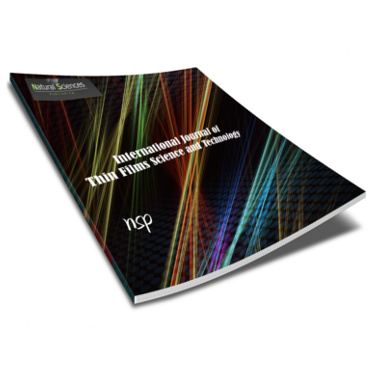International Journal of Thin Film Science and Technology

Abstract
SiO2 doped TiO2 (SiO2 - TiO2) nano structure thin films were prepared by dip coating method on glass substrates by varying the concentration of SiO2 and annealed at 400°C for 3 hours in a muffle furnace. The films were characterized by X-Ray diffraction (XRD), UV- visible spectroscopy and Scanning Electron Microscopy (SEM) with elemental (EDAX) studies techniques. UV light impairs photosynthesis and reduces size, productivity and quality in many of the crop plants. Increased exposure of UV light reduces total chlorophyll content in plants. Development of nano science and technology provides new ways for better treatment of UV resistant films and fabrics using Titanium dioxide (TiO2). TiO2 has good Ultra Violet (UV) blocking power and is very effective in applications because of advantages such as non-toxicity, chemical stability at high temperature and permanent stability under UV exposure. The main objective of this study was to analyze the performance of SiO2 doped TiO2 thin films as a protective layer to the chlorophyll contents present in medicinal plants Solanum nigrum (Manathakkali) and Solanum trilobatum (Thuthuvalai) from UV radiation. The study revealed that crystallite size and transmittance of films decrease with increase in SiO2 concentration. The thickness of the film increases with increase in SiO2 concentration. However, the chlorophyll content increases in accordance with increase in SiO2 concentration. This study showed that SiO2 doped TiO2 thin films are good absorber of UV light and protect the total chlorophyll content in medicinal plants.
Recommended Citation
Sankareswari, M.; Vidhya, R.; Malliga, P.; Karunai Selvi, B.; and Neyvasagam, K.
(2017)
"Influence of SiO2 Concentration on TiO2 Thin Films as Protective Layer to Chlorophyll in Medicinal Plants against UV Radiation,"
International Journal of Thin Film Science and Technology: Vol. 6
:
Iss.
1
, PP -.
Available at:
https://digitalcommons.aaru.edu.jo/ijtfst/vol6/iss1/2

